JACOB D. R. MESLEE for the Garde Meuble Impérial
Beech armchair, moulded, carved, relacquered and reupholstered
Pegged joints
Stamped on the front crossbar
Several stencilled numbers: "R 737"; an old illegible label; "V 6331"; a scratched inventory, probably "V 7205".
Paris, circa 1805.
This armchair is notable for its sobriety and the quality of its assembly. It is made from a beech wood shaft, all the joints of which are pegged. The four legs are sabre-shaped, the waist slightly curved and the armrests in ringed columns. The seat is moulded on four sides.
Orders from the Garde-Meuble Impérial
This is an interesting example of an order placed to furnish the imperial residences in abundance, with quantities sometimes reaching several dozen! Although stamped by François-Honoré-Georges Jacob-Desmalter, it was not uncommon for models to be exchanged between colleagues such as Pierre-Benoît Marcion and Jean-Pierre Louis.
The commission for this chair probably originated in the campaign to refurnish the Trianon. The delivery notes mention a number of chairs with four Etruscan legs. However, around 1806, the administration of the Garde-Meuble sought to restore the Château de Rambouillet to its former glory, lost in the throes of the Revolution.
As a result, numerous additions were made from Trianon and Saint-Cloud to make it a pleasant hunting residence for the Emperor.
19th century inventories
This chair is part of a set comprising 4 identical pieces. The inventory drawn up in 1817 under Louis XVIII bears witness to this: "Quatre fauteuils bois et velours idem" (painted wood, square shape, green Utrecht velvet, gilded nails, striped braid) under the number "R 737", the location of which is given for the bedroom of flat no. 6 on the first floor of the château; a space reserved for distinguished guests...
Following the fall of Charles X, Rambouillet was stripped of its furniture. It was almost completely stripped of its furnishings by 1834, and this armchair, in a pair, was assigned to the royal estate at Versailles. Under the number "V 7205", it went to the Hôtel du Grand Contrôle, a landmark building of the Ancien Régime, built by Hardouin-Mansart. Before the Revolution, it housed the residence of the Controller General of Finances. Under the July Monarchy, this private mansion became the home of the architect of the Château de Versailles, Frédéric Nepveu. Nepveu was to shape the estate to allow the creation of the "Museum of the History of France". It was in this context that the seat was included in the 1840 inventory.
Finally, under the Second Empire, this armchair was assigned to the Macips Pavilion. It was given the number "V6331" in the 1855 inventory. Finally, it was returned to the Garde-Meuble in Paris in 1875, and was probably included in estate sales at the turn of the century.
The Château de Rambouillet
The Château de Rambouillet was consecutively a royal, imperial and presidential residence, and is now administered by the Centre des Monuments Nationaux. The Count of Toulouse acquired the estate in 1706. He carried out major embellishment work, which his son continued, particularly in the gardens. We owe to him the thatched cottage with shells, the hermitage and the Chinese kiosk.
The Bourbons' taste for hunting prompted Louis XVI to buy the estate from his cousin, as it was more convenient than the Saint-Hubert residence. The King ordered the creation of vast outbuildings in the surrounding area. The estate was shunned by the Queen, but this did not stop her husband from building a thatched cottage and a dairy for her in 1787, in the greatest secrecy. At the same time, the gardens were redesigned by Hubert Robert.
The château was then abandoned between 1793 and 1804.
Napoleon I felt a particular attachment to the residence and tried to make complex compromises between the desired status of hunting residence and the imperatives of etiquette.
The residence continued to receive numerous embellishments, including under the Restoration. Although it was not included in Louis-Philippe's civil list, it was again included under Napoleon III. From the 1880s onwards, it was used as a state reception house and presidential hunting lodge, and numerous alterations have caused considerable damage to the historic character of the residence...
Condition report: restoration to the highest quality. Seat stripped, relacquered, seat redone with animal hair and semen. Superb jade green embossed velvet from Casal.
We offer a reupholstering in keeping with the period, as well as a velvet typical of the period.
To the best of our knowledge, the Mobilier National does not hold a similar model, with four sabre legs, which is the least common production of all these château armchairs, of which there are many variations: double baluster legs, tapered legs, etc.
To sum up:
180X - 1806/7: order for the Trianons
1806/7 - 1832/4 (Empire and Restoration) "R737": château de Rambouillet, 1st floor of the château.
1832/4 - 1855 (July Monarchy, Second Republic and early Second Empire) "V 7205": Hôtel du Grand Contrôle, Versailles, residence of the architect of the Château.
1855 - 1875 (Second Empire and Third Republic) "V 6331": Hôtel de Macips, Versailles.
Last quarter of the 19th century: Garde Meuble in Paris.
Today: private collections, including an important French château





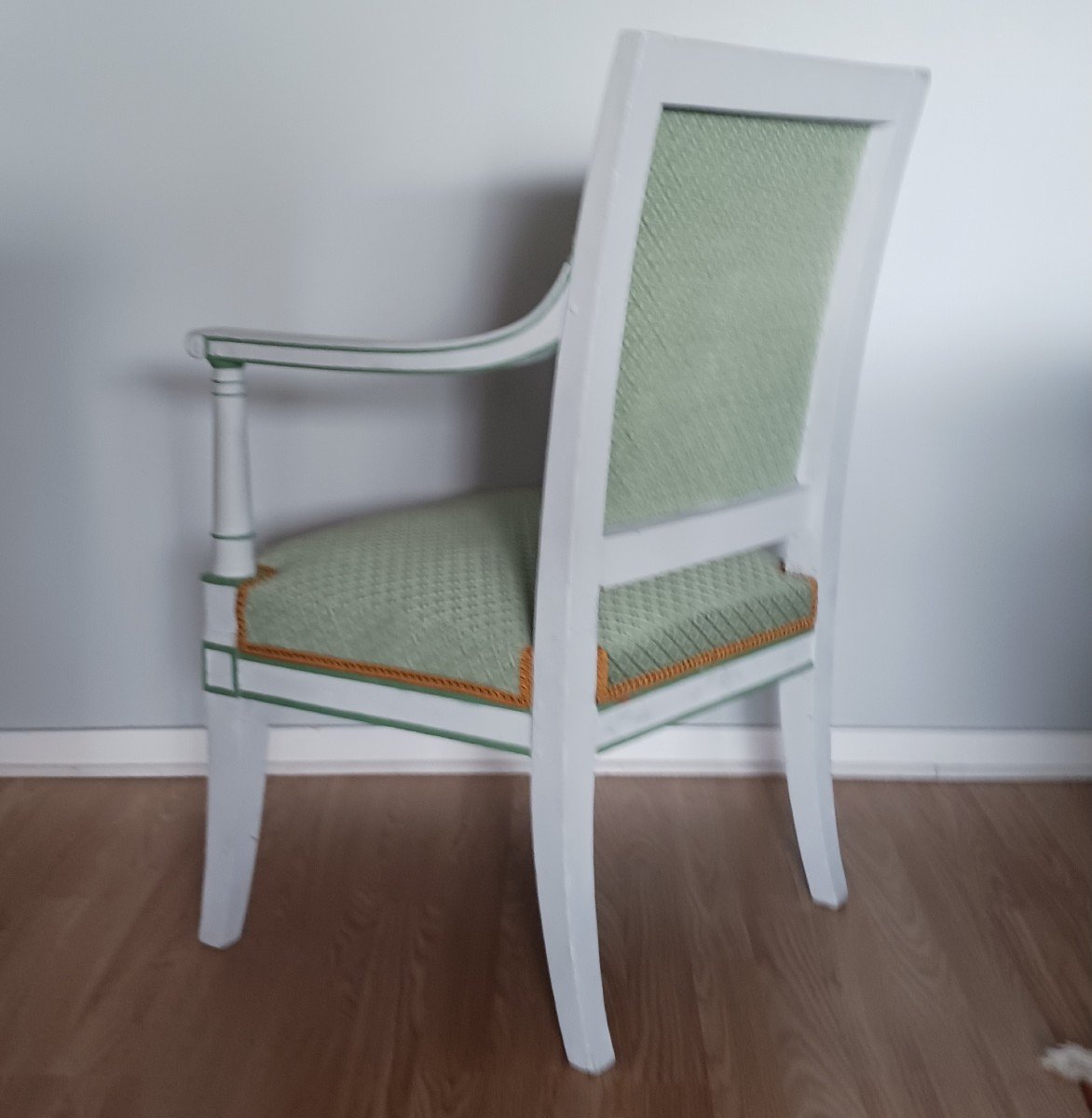




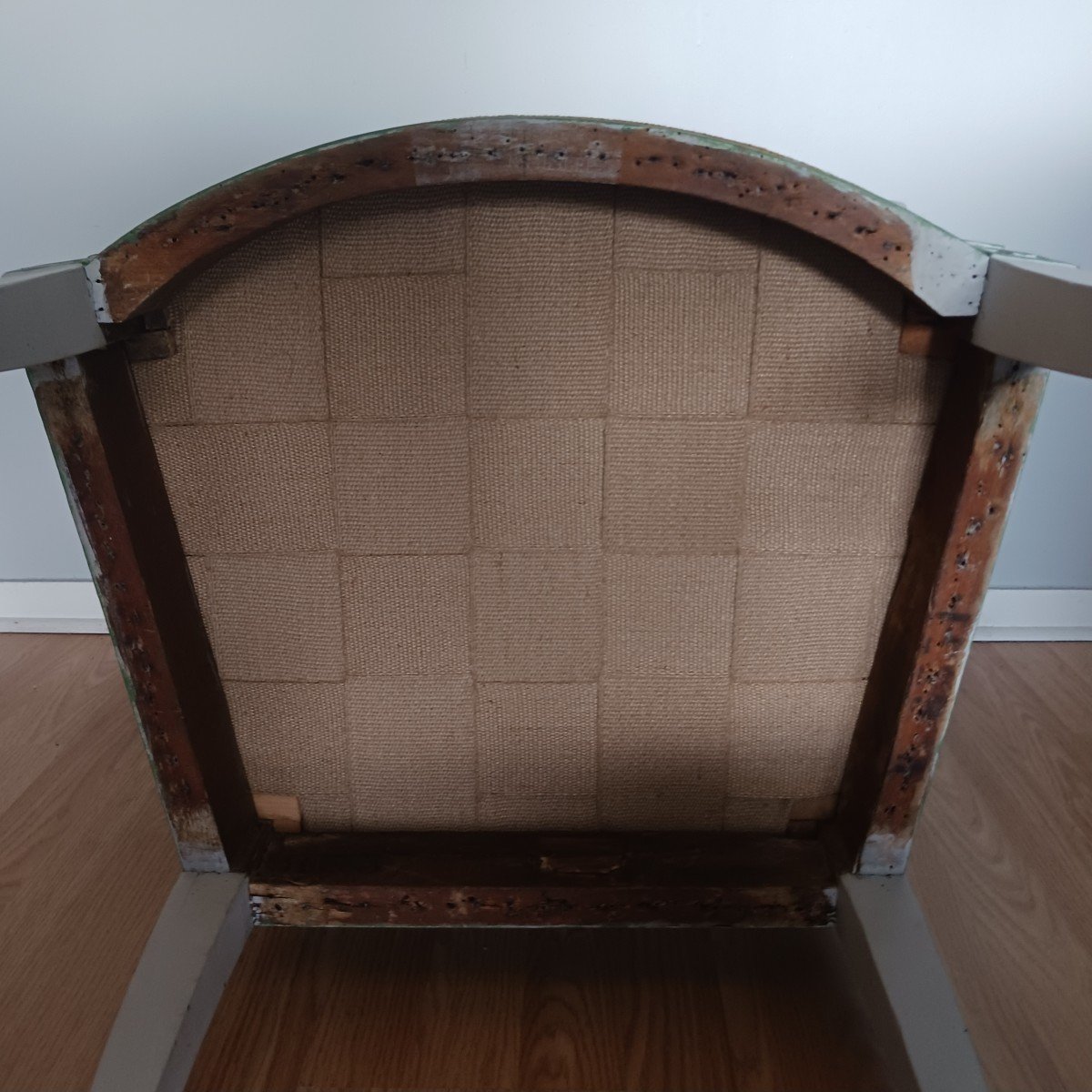
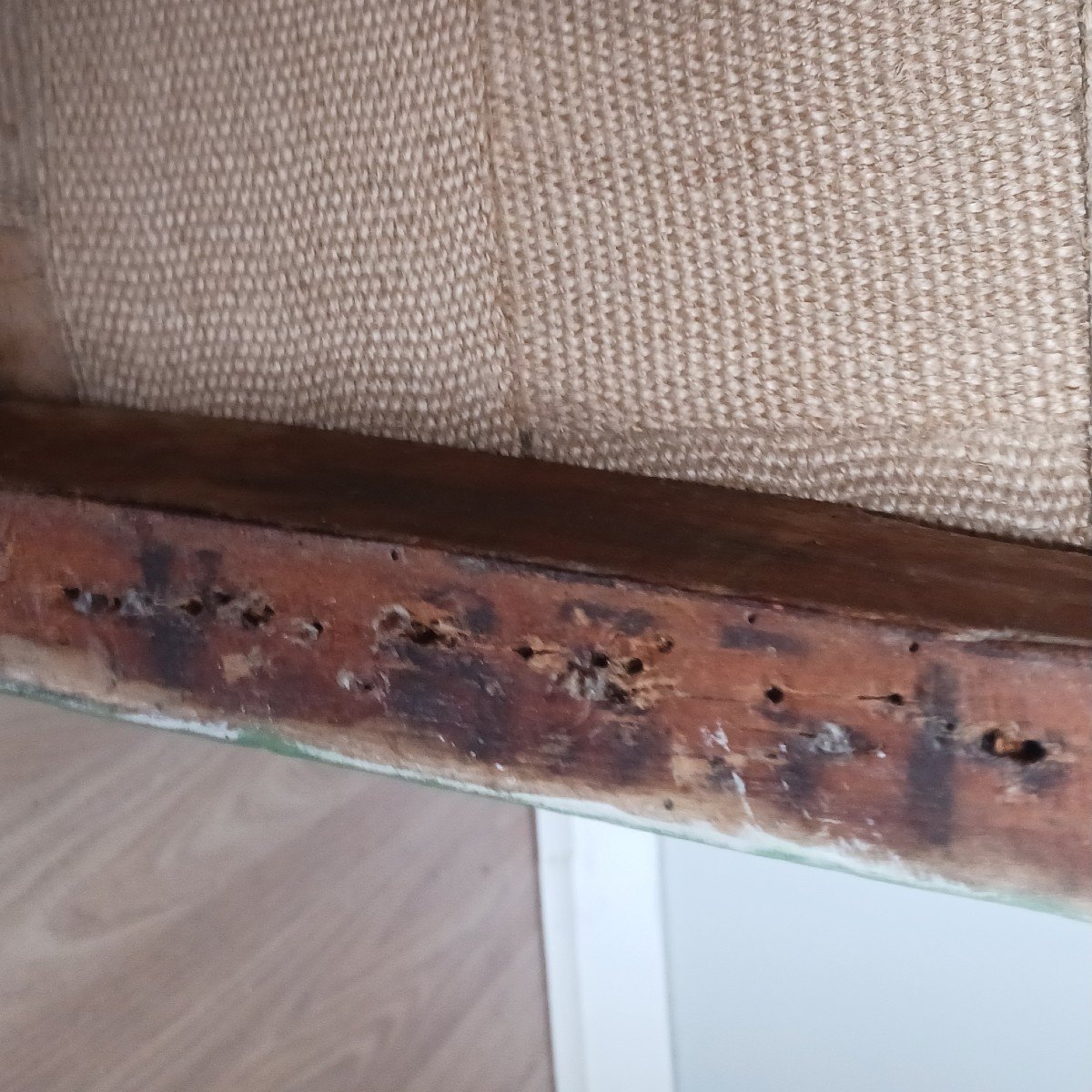
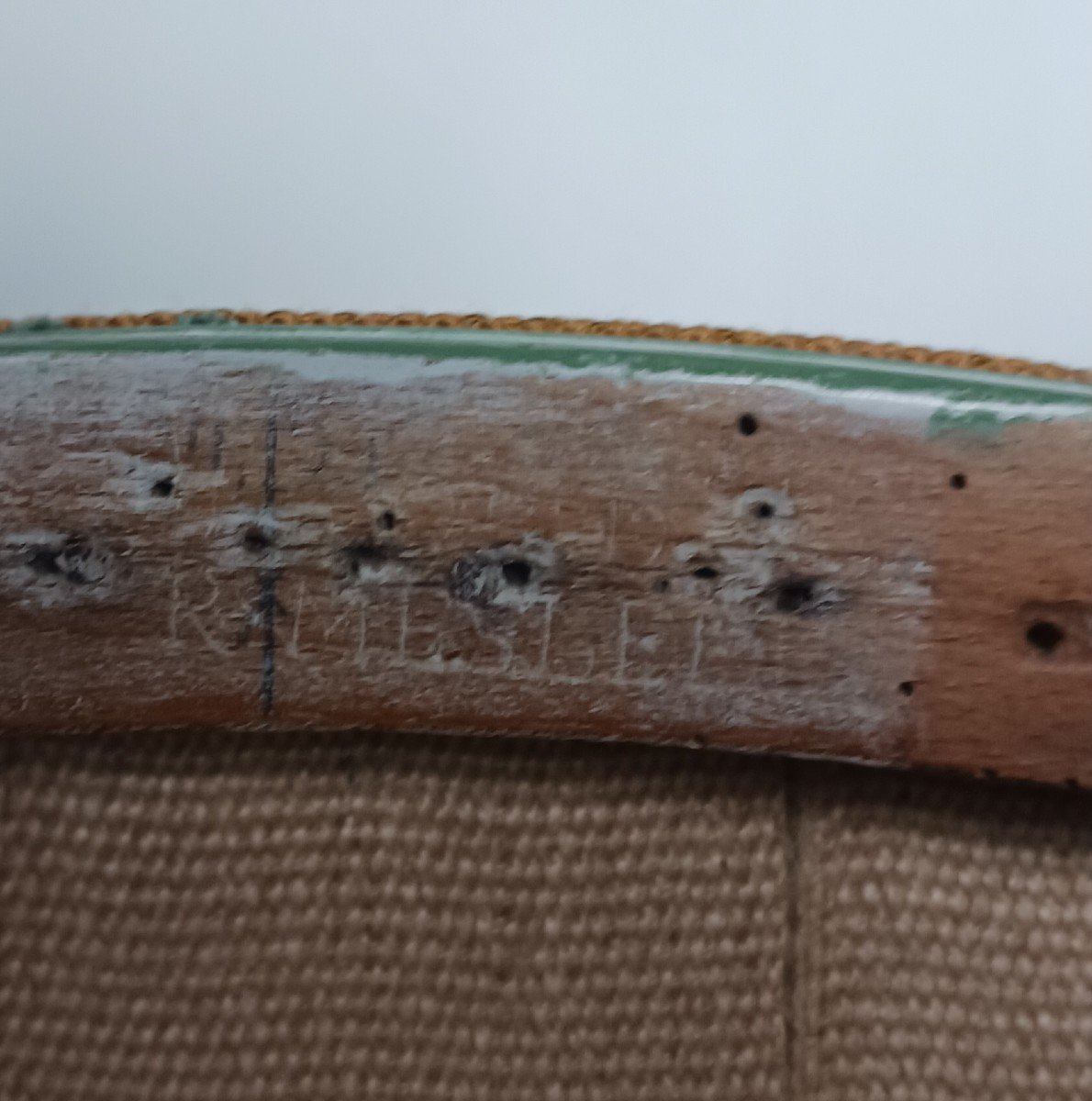
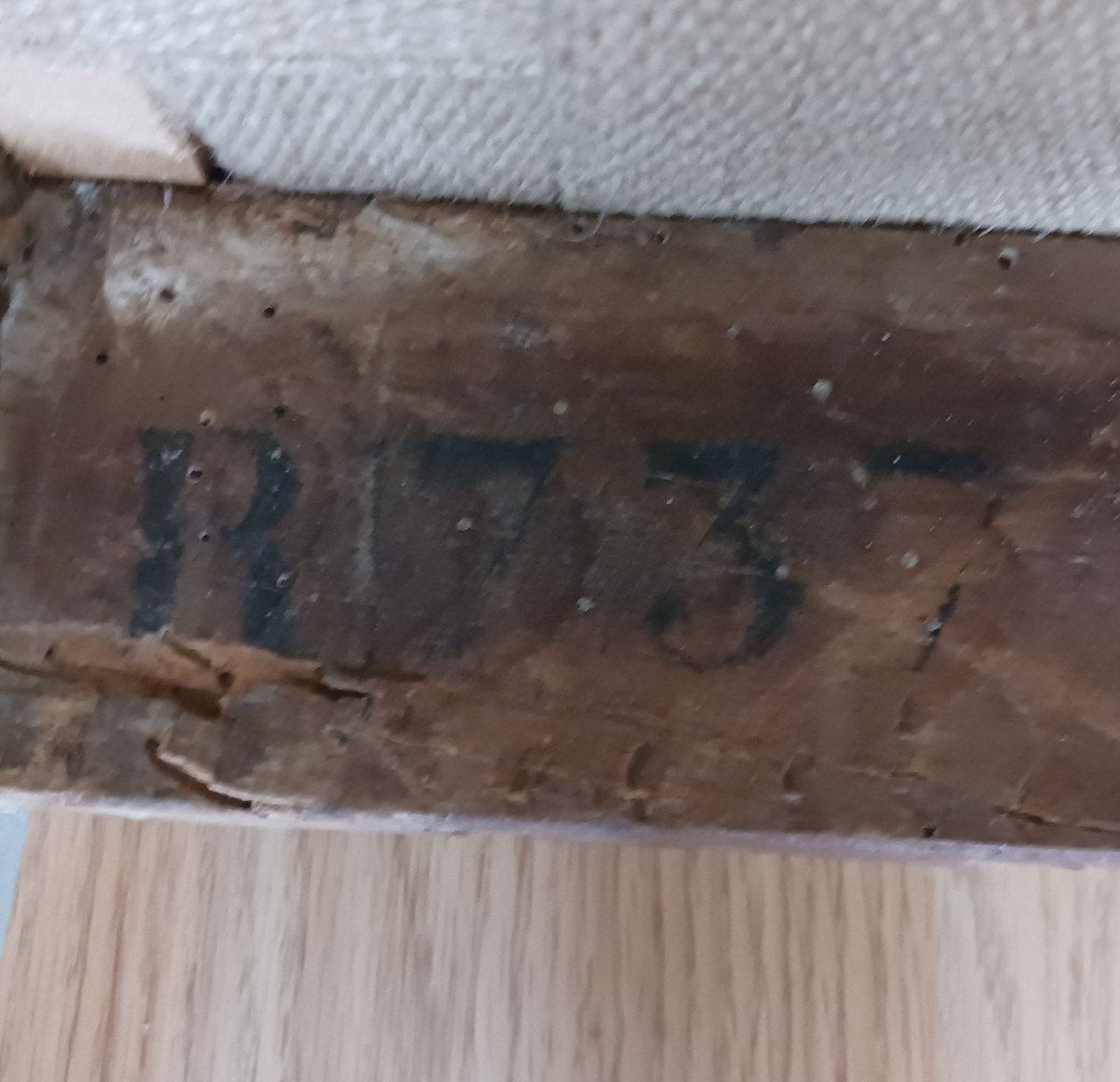













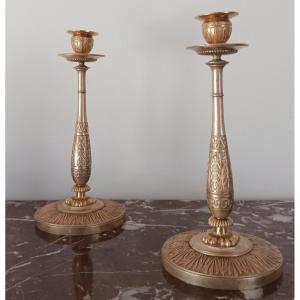

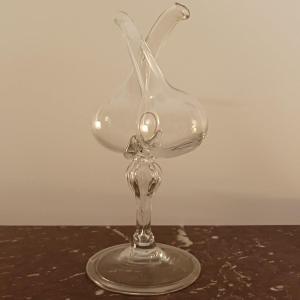


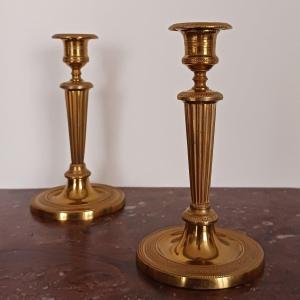







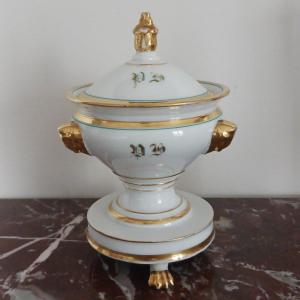



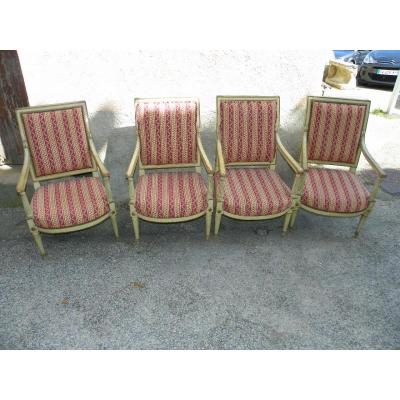





 Le Magazine de PROANTIC
Le Magazine de PROANTIC TRÉSORS Magazine
TRÉSORS Magazine Rivista Artiquariato
Rivista Artiquariato